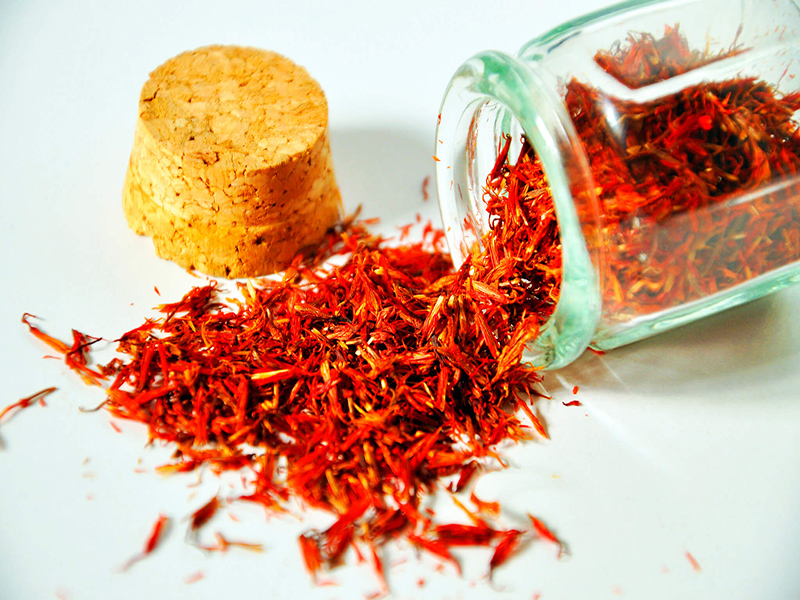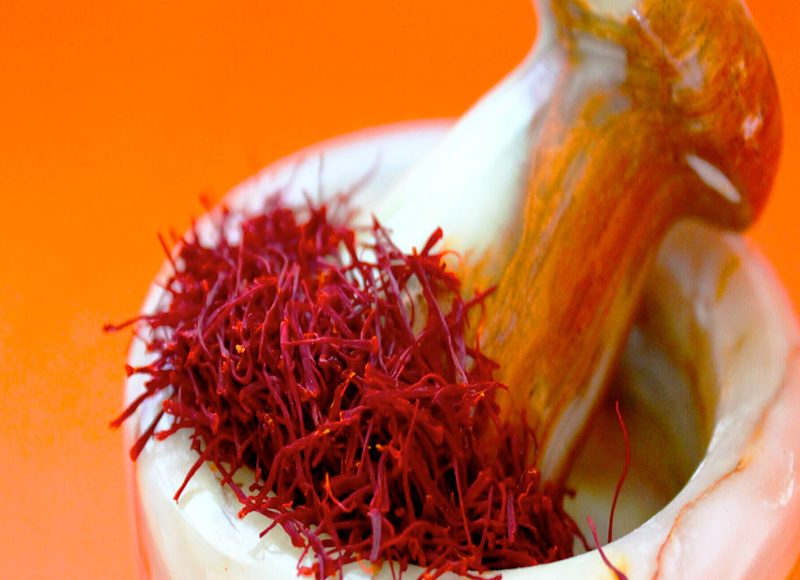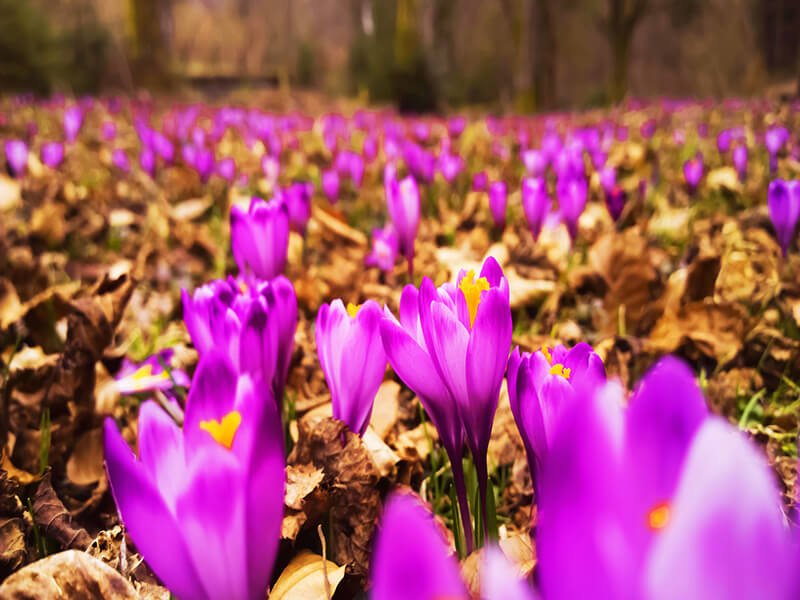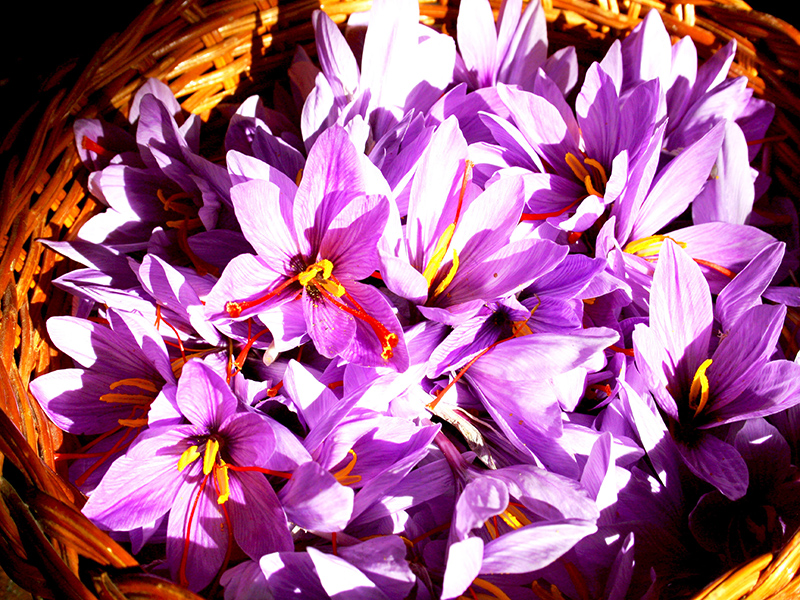
Saffron is a spice derived from inside of a flower called Crocus Sativus now known as the saffron flower. This flower is a plant with a relative height of 10 to 30 cm. Once a year, this plant grows into this beautiful purple flower and, inside each flower are 3 red filaments. Those 3 filaments are where the spice of saffron comes from. Since, each flower has only 3, that’s why this spice is the world’s most expensive spice and why it’s called the Red Gold.
What is the history of Saffron?
In the Achaemenid period, saffron was used to decorate bread and flavor the food. In the Sassanid period saffron was used as a writing compound in the colors of red and yellow.
By sending Iranian saffron to many parts of the ancient world, the Iranians were able to introduce saffron properties to Greeks, Romans, Chinese, and Arabs. During the Islamic period in the first to fourth centuries AH they taught saffron cultivation techniques to Islamic nations around the Mediterranean. The first saffron fields were planted by Iranians in the Sham region (Syria) and from there the cultivation of saffron in northern Africa and Andalusia (Islamic Spain) and Saghilia (Sicily) was done by Iranian tribes all throughout those regions.

What are the medicinal properties of Saffron?
One of the ancient methods in curing diseases in the world is herbal medicine. It is something that has been practiced in Iran for thousands of years. The methods used in physical and mental diseases are called “herbal remedies”.
Saffron contains over 150 different compounds including carotenoids, safranal, crocin, antioxidants and other biochemicals that protect the body against free radicals and minimizes cancer risks. It can boost the energy level and improves the mood, as it has antidepressant properties.
Saffron also contains minerals and vitamins that are essential for human health. Saffron has many health benefits. Some of the most important properties and benefits of saffron are: ability to improve respiratory health, optimize digestive system, relieve pain, improve sleep patterns, reduce bleeding, improve heart health, increase blood circulation, prevent diabetes, strengthen bones and improve immune function.
Although it has lots of benefits, there are some dosage limitations for using this beneficial spice. You can consume up to 1.5 grams of saffron per day. This amount is 20 milligrams for pregnant women as it may cause miscarriage. It is worthy to mention that high dosages of saffron, five grams or more, is toxic and it can cause headache, agitation, low blood pressure or even cardiac arrest and death.
Since there are 80 thousand hectares of saffron farmlands in this county, once every year in early November people who live in the neighboring cities come to the Khorasan province to work on the harvest. Khorasan province alone produces 80 percent of Iran’s saffron.
More than 4 hundred thousand people mostly in the Khorasan province wake up before dawn to go to the fields and pick the delicate saffron flowers that have bloomed overnight. They must be picked before being exposed to too much sunshine and heat. This process is all done by hand and because of a time limit in harvesting, it becomes a very though and heavy responsibility for the farmers. The flowers are then carried in wicker baskets to the processing areas where the stigmas are patiently removed by hand. Every 167 flower is only equal to one gram. Just keep that in mind the next time you want to buy saffron.
The first thing they have to do is to gently toast the stigmas in order to dry them. The next step is they are tested in the factory and divided into different groups depending on the quality of the saffron. The last step is they get packed and sealed, ensuring the unique and exquisite flavor of the saffron.

Saffron is the most expensive spice in the world with an extraordinary color, taste and smell. It is used in most Iranian dishes as well as in some Indian dishes. If you want to list the foods and pastries and drinks that use saffron inside Iran, the compact space of this blog won’tallow it. To put it to you in simple words about 70 percent of all foods and about 85 percent of all pastries inside Iran have saffron inside it. You always have the option of not using it but then when you’re eating the food especially when you have special guests you would feel that something is always missing. It is very common that when foreign guests come to Iran after a couple days they always get confused about the amount of saffron used in their every day food.
A list of the most famous food and sweets made with saffron inside Iran are Khoresht Bademjan (eggplant stew) Khoreshte Gheimeh (yellow split peas stew) Khoreshte Fesenjan (walnut stew) Khoreshte Mast (beef yogurt stew) Loobia Polow (rice with green beans) Tachin (layered saffron rice & chicken) most of the Kebbas specially Joje Kebab (Saffron Chicken Kebaba) & Kebab Koobideh and in some deserts such as Faloodeh Shirazi (noodle with saffron ice cream) Sohan, Saffron Ice cream ,Halva Sholezard and the list goes on.

Follow Us
